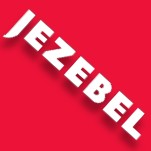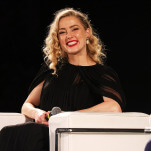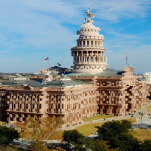Dress Code: The Wonderful World Of Bras
LatestThis week on Dress Code, we’re taking it on: the bra, in all its catileverd, underwired, full-cupped, convertible, molded, contoured, minimizing, padded, push-up, strapless, full-figured, 18-hour glory.
Among the many complicated conundrums of modern existence, few are more baffling, more overwhelming, more disspiriting than the brassiere. Symbol or reality, it’s problematic: fit, shape, color – all these provide a source of stress we don’t need. And yet, the bra is a wonderful feat of engineering, and one capable of greatly enhancing our comfort. Now, there are a lot of bad things we can say about the Internet, but bra-shopping is one of those times when it shows its worth: for convenience and sheer variety, we’ve never had it so good, bra-wise. What follows is just a start, a mere toe-dip into the sea that is bras. And here, more than ever, I’m counting on your collective expertise for advice on sourcing, shopping and fitting – so let’s bring on the brain trust! Here, a few basic questions that the bra necessarily suggests:
Do you need a bra? “Need” is perhaps the wrong word; few of us will die without brassieres, and many women lived many millennia without them. That said, many of us are more comfortable with the support. My mom never wore a bra; she was small-busted and didn’t like them. On the other hand, I did object when my dad’s cousin, an aging radical, went into our bags at a family reunion and threw out everyone’s bras behind our backs as an act against the patriarchy. Some people use the “pencil” rule but like most rules, it’s totally arbitrary. Do what you want. (Not in the “go to hell” way.)
Bra Fitting: You’ve all heard the stats: 80% of us wear the wrong bra size. In the grand scheme of things, this is not a tragedy. However, as anyone who’s watched What Not to Wear can tell you, a properly-fitting bra can make you a lot more comfortable and does all kinds of magical things to posture and clothes. Even if you don’t care about lifting, separating, miniminzing or maximizing, the support’s nice – and if you want any of the above, well, a good bra can do that too.
If you can, get a professional fitting. Whether it’s from the intimates department of a department store, just about any lingerie boutique, a “fitting specialist” (Google it!) or the Orthodox guy on the Lower East Side who can size you up at ten paces, they’ll often surprise you with their magical revelations about back-size and cup ratio.
If you don’t have access to one of these miracle workers, don’t fret. Grab a measuring tape and let’s roll.
1. Pull the measuring tape around your back and across the fullest part of your bust. Make sure the measuring tape around your back remains parallel to the floor. Measure the total number of inches and make a note.
2. Now, extend the measuring tape around your back and under your arms, still making sure that the tape remains parallel to the floor. With your arms down, place the tape just above your bust where your breast starts. Measure the total number of inches and record it. This measurement is your band size.
3. Subtract the second measurement from the first measurement. The difference is your cup size. For example, if your first measurement was 39″ and your second measurement was 35″, you would use this equation: 39″- 35″ = 4″. According to the chart below, you would be a D cup. If you didn’t end up with a whole number, round up to the nearest whole inch.
-

-

-

-

-

-

-

-

-

-

-

-

-

-

-

-

-

-

-

-

-

-

-

-

-

-

-

-

-

-

-

-

-

-

-

-

-

-

-

-








































